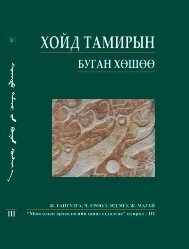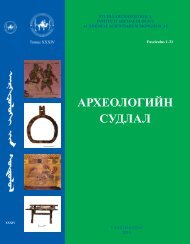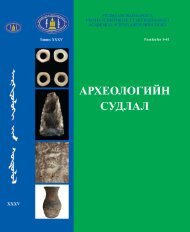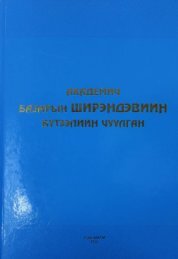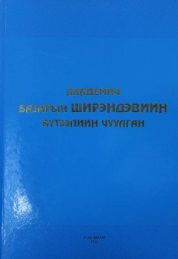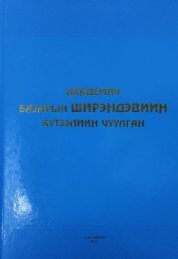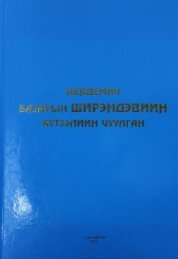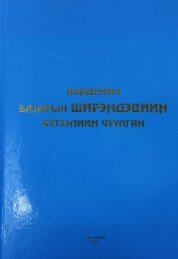2
You also want an ePaper? Increase the reach of your titles
YUMPU automatically turns print PDFs into web optimized ePapers that Google loves.
ÝÐÄÝÌ ØÈÍÆÈËÃÝÝÍÈÉ ªÃ¯¯Ë˯¯Ä<br />
386<br />
THE PEOPLES REVOLUTION OF 1921, ITS PLACE AND<br />
SIGNIFICANCE IN THE HISTORY OF MONGOLIA<br />
Since the Congress is taking place on<br />
the eve of the fiftieth anniversary of the<br />
People`s Revolution, I should like to dwell on<br />
some important, from the scientific of view,<br />
principle problems in the history of this<br />
Revolution.<br />
The last half century of Mongolia<br />
history, because of the profound social and<br />
economic transformations it witnessed, and<br />
the material and spiritual benefits which the<br />
Mongol people have traversed in their long<br />
history. That is why the People`s Revolution,<br />
the fiftieth anniversary of which we shall be<br />
celebrating in July next year, merits a special<br />
chapter in the history of the country.<br />
The significance of the Mongolian People`s Revolution stands out in bolder<br />
relief when we try to understand the essence of the socio-economic conditions<br />
which prevailed before the Revolution, the internal forces and external factors of<br />
the Revolution, closely interrelated according to the general law of development<br />
of the universal historical process, and finally the social transformations<br />
introduced with the victory of the Revolution. I would like to dwell briefly on<br />
the socio-economic background of the appearance, development and finally the<br />
victory of the People`s Revolution in our country in 1921.<br />
Pre-revolutionary Mongolia was a country of feudal relations established<br />
throughout the centuries. Mongolian feudalism on the eve of revolution,<br />
in spite of its many specific features, on the whole had features common to<br />
the feudal mode of production in general, for instance the feudal ownership<br />
of land and cattle, and in part the serf-arat. Being limited in time, I would like<br />
merely to mention that the forms of land ownership undoubtedly had their own<br />
peculiarities, here as elsewhere, modified by the conditions of nomadic cattle-arat<br />
who had the right to private ownership, of cattle, based on his personal labour<br />
but herbed on the pastures of his feudal khan.<br />
With reference to stagnant state of feudal relations, there is no denying that<br />
partial transformations took place in certain aspects of the economic and spiritual<br />
life of the country. For example one cannot ignore the fact that feudal relations<br />
in Mongolia were, to a certain extent, influenced at the last century by the




